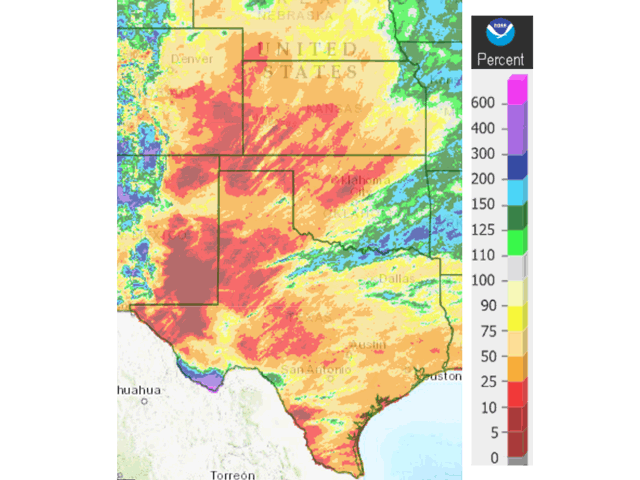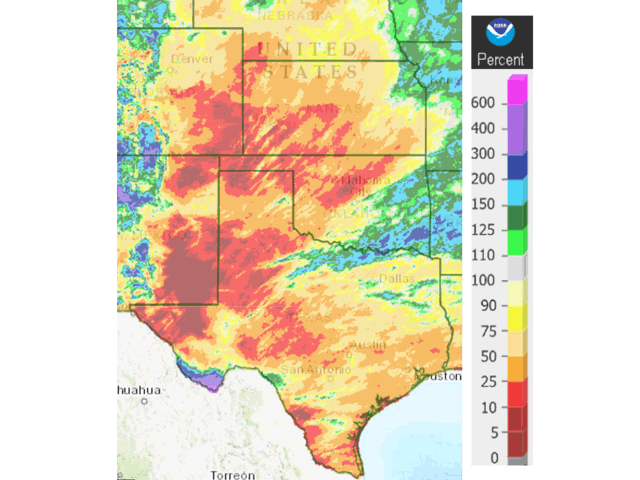Ag Weather Forum
Stifling Drought Continues in Southern Plains
So far, the big U.S. storm systems of 2023 have bypassed most of the western and southern Plains. In the western and southwestern Plains, February precipitation amounted to no more than half the normal amount. March has not been any better; 30-day precipitation totals as of March 22 are mostly no more than 25% of normal. Above-normal amounts as a percentage are confined to a sliver of northern Texas, the southeastern quarter of Oklahoma, the northeastern corner of Kansas, and the extreme southern edge of the Texas Big Bend area.
To see the March 23 U.S. Drought Monitor map and how much of the Southern Plains is in especially extreme and exceptional drought, go to: https://droughtmonitor.unl.edu/….
That lack of moisture keeps showing up in winter wheat ratings. Winter wheat is coming out of dormancy in the Southern Plains in rough shape. As of March 19, the winter wheat crop in Kansas was rated 50% poor to very poor; Oklahoma, 43% poor to very poor; and Texas, 44% poor to very poor. The Texas rating indicates some benefit from winter precipitation, but Oklahoma and Kansas ratings continue to show the impact of sustained drought.
P[L1] D[0x0] M[300x250] OOP[F] ADUNIT[] T[]
Looking just at March, precipitation totals show Goodland, Kansas at 0.56 inches, 54% of normal; Dodge City, Kansas at 0.01 inch, only 1% of normal; Wichita, Kansas at 0.09 inches, just 6% of normal; Oklahoma City at 2.47 inches, 143% of normal; Guymon, Oklahoma at 0.03 inches, just 4% of normal; Amarillo, Texas at 0.38 inches, 45% of normal; and Lubbock, Texas completely dry for the month so far.
These meager amounts of moisture point to no meaningful support for winter wheat coming out of dormancy. This situation makes another year of reduced production a real possibility following the drought-affected harvest in 2022. Last year, the total winter wheat output in Kansas, Oklahoma and Texas amounted to 351.8 million bushels, down 36% from 2021.
Precipitation forecasts through April suggest normal to above normal amounts for the Southern Plains. How these forecasts verify will be closely tracked for at least some easing of the stubborn drought. Moisture will offer some benefit, notably in Kansas and Oklahoma. The Texas wheat crop is already more than 20% headed, so precipitation benefit will be more limited.
Also of importance for moisture development is the effect on row crop planting and early growth. Drought is a big concern for row crops as well, with mid-March USDA assessments showing 76% of the Kansas corn area in moderate or more intense drought.
Bottom line: Southern Plains drought remains well in place and forecast precipitation offers only limited benefit for wheat development and row crop planting and early growth. A quick recovery from the multi-year drought appears unlikely given that a change in precipitation patterns is indicated to only be a temporary development.
Bryce Anderson can be reached at bryce.anderson@dtn.com
Follow him on Twitter @BAndersonDTN
(c) Copyright 2023 DTN, LLC. All rights reserved.






Comments
To comment, please Log In or Join our Community .